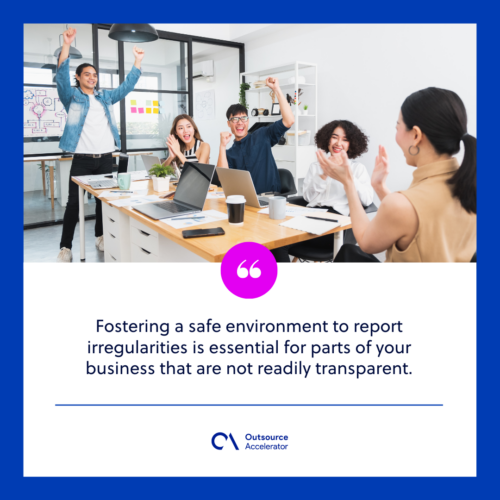Managing culture change for your organization

Changes like business structure, leadership, technology, and culture happen constantly. Adapting and realigning these elements are essential to ensure that an enterprise keeps up in the face of the changing marketplace.
One particularly tricky transition is in implementing a culture change. It largely depends on human values and behaviors, which vary from person to person and are influenced by more factors.
Unlike setting up a new machine or launching a software update, working on an organizational culture is a more multi-faceted endeavor with deeper, long-term benefits.
This article will introduce you to the concept of organizational culture change and why it happens—all to help you set one up for your own company, group, or team.
What is a culture change in an organization?
A culture change, or a cultural transformation, is a realignment of an organization’s internal practices, perspectives, and approaches.
This is often done in response to an observed change, whether external, like social and economic conditions, or internal such as a change in goals or key personnel.
A cultural transformation is often a major undertaking that requires the cooperation of all the members to pull off successfully. A 2021 Global Culture Survey of over 3,000 workers and executives revealed that 72% of respondents connect company culture with successful initiatives.

However, a common misconception is that cultural change is a transition from bad practices to good ones.
Sometimes, good company cultures just so happen to no longer be aligned with their environment. It’s a matter of repositioning your organization to meet your new targets and needs.
One example is when the global coronavirus pandemic took hold of the world. Most companies were forced to adopt remote or hybrid work arrangements.
This required employees to open themselves up to a lot of new technologies, manage a work-life balance scenario, and take ownership of their new responsibilities away from the office.
Reasons for initiating a culture change in the workplace
Cultural transformation in an organization, regardless of size or structure, doesn’t come from nothing. There is usually a compelling reason to do so, often at the risk of the company’s survival or growth.
If you need help justifying your cultural transformation plans or are looking for precedents in the real world, read on for common reasons to start the change in your workplace:
New leadership
One of the most common reasons for an organizational culture change is when people in the top brass change.
Leaders and visionaries are brought in, usually when one leaves, or the organization is set to embark on a new age. Conversely, new company leaders are responsible and free to implement their vision and idea into the organization.
In most cases, these things start with the new leader, and a transitional team is built around it. Leadership and communication skills are often key to onboarding everyone on the project.
Perhaps the most popular example of a visionary saving a company is Steve Jobs and Apple.
Jobs left Apple in 1985 and returned in 1996 in the middle of the company’s sinking stock prices. He initiated a focus on core products and, more importantly, reinstated the brand’s image as a hip technology brand.
While the character’s legacy remains polarized, Apple became an example of cross-functional collaboration—mostly focused on bringing Jobs’ vision to life.
Address poor organizational performance
Business performance can be measured in a wide range of metrics, from revenue to customer retention. Once these KPIs start floundering, decision-makers will inevitably start looking for the root cause of the problem and remedy them.
It may be caused by outdated equipment or inefficient business processes. In some cases, the existing company culture is out of touch with its customer base. This leaves your company unable to meet its client’s needs, negatively affecting the business.
Car manufacturing firm Chrysler was in dire financial straits in the early 1980s. Lee lacocca, freshly released from Ford Motor Co, was hired by the competing Chrysler to rescue them from bankruptcy.
Aside from pleading with Congress for a $1.5 billion loan for the car company, he has initiated massive, company-wide changes.
To restore confidence among his people, Iacocca downgraded his salary to $1 a year, effectively overturning the previous “everything for me, nothing for Chrysler culture.”
He also initiated a massive reshuffle of leadership that transformed the automotive company from discrete departments into a single, monolithic structure.
The company became profitable in 1982, paid back its loans in three years, and remained strong until Iacocca retired in 1992. Eventually, Chrysler went bankrupt in 2009 and was purchased by Fiat in 2011.
Curb an existing toxic culture
Granted, there are instances where businesses continue to rake in a steady revenue stream. Still, problems might be plaguing the organization, such as delinquency in the workplace or increased attrition rates.
This is common in competitive and high-pressure work environments. The need to deliver sometimes supersedes the maintenance of a healthy work environment.
A 2023 Fortune survey revealed that 64% of employees had experienced a toxic work environment, with 44% blaming leadership.
While institutionalized problems like these cases look hopeless, experts say they can be fixed without wiping your entire slate clean.
An article from Forbes outlines four ways to overturn an existing toxic culture:
Accept responsibility
The first thing in addressing any problem is to recognize its existence. Repairing toxic work culture starts from the top, with the leaders taking charge instead of pointing fingers.
Seek external help
Problems can’t be solved with the same culture and mindset that has fostered it. Bringing in a third-party coordinator or corporate coach is worth the investment as you introduce fresh perspectives and industry best practices.
They can help devise a culture change strategy that meets your unique organizational needs.
Outline new policies driven by accountability
Apart from everyone’s willingness for a positive change, you need ground rules codifying these attempts for a cultural transformation. New policies should be focused on breaking down existing power structures that disenfranchise members of your organization.
Additionally, reintroducing accountability to all levels of the organization will increase everyone’s involvement.
Cultivating a safe environment
While whistleblowing, in theory, brings justice to the workplace, the reality may not be so. Fostering a safe environment to report irregularities is essential for parts of your business that are not readily transparent.
Of course, it also helps to create a culture where everyone is valued. From executive-level managers to rank-and-file employees, their insights and ideas for the company’s benefit will always have a place to be heard.

Expansion
A growing company is exposed to new risks, like navigating uncharted waters. The workplace culture everyone has enjoyed during its local or startup phases might no longer be applicable once it goes public or starts catering to international markets.
LinkedIn Co-founder Reid Hoffman identified five stages of growth companies could use as a reference. He compared an enterprise to a social group, with each transition commanding a culture change.
| Stage | Size |
| Family | 1 to 9 employees |
| Tribe | 10 to 99 employees |
| Village | Hundreds of employees |
| City | Thousands of employees |
| Nation | Tens of thousands of employees |
As in Hoffman’s example, growing companies translate to more departments and people, requiring you to scale business practices and management strategies.
To keep them manageable, the existing culture should always remain apt for the organization’s population.
Inspire a positive change in your workplace today
Looking into a culture change in an organization is a massive undertaking. It should be suitable for the business’s unique needs and future targets.
More importantly, identify where this endeavor will be coming from to clearly define the direction that it will take in the future.
If done correctly, this transitional effort will benefit the entire organization. Not only does it improve the employee experience, but it also helps position the enterprise to meet changing demands.







 Independent
Independent




